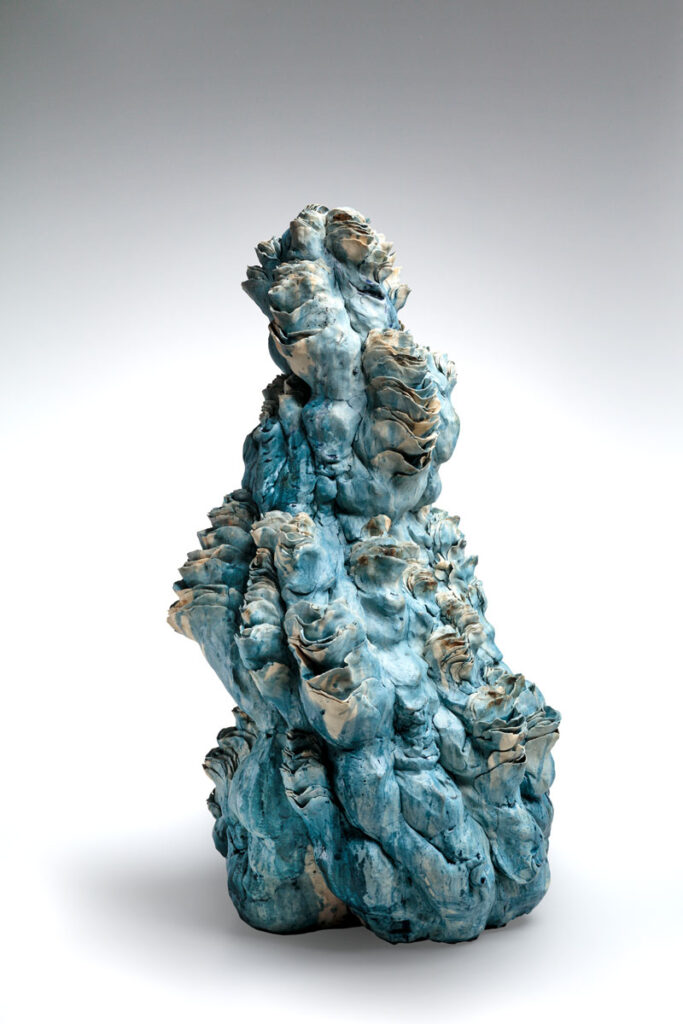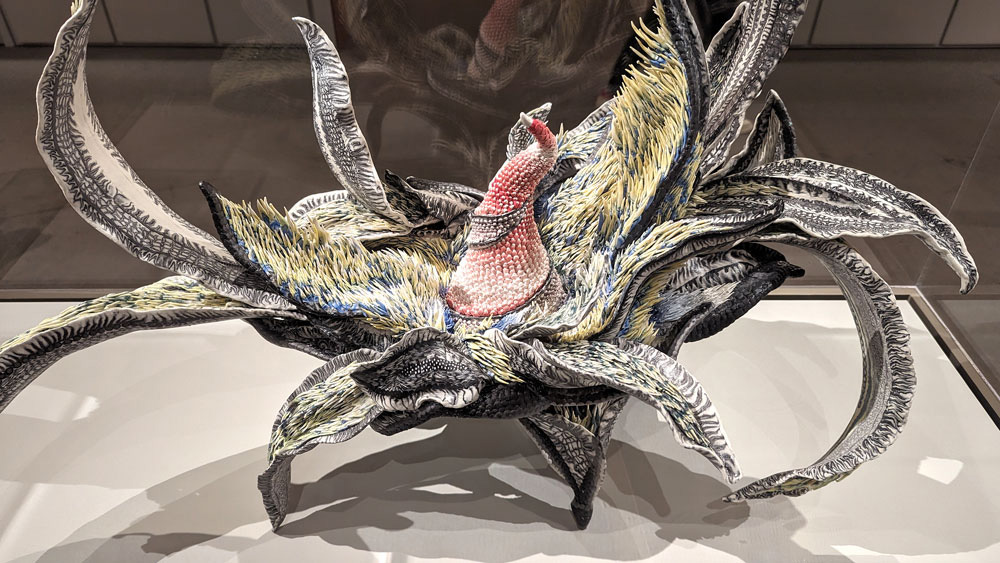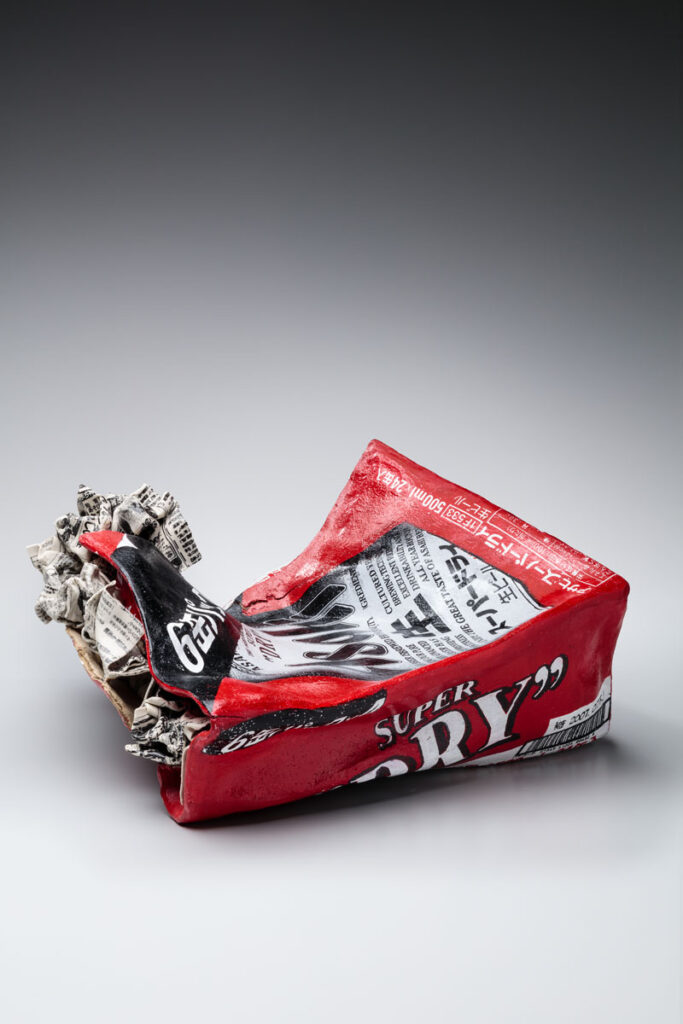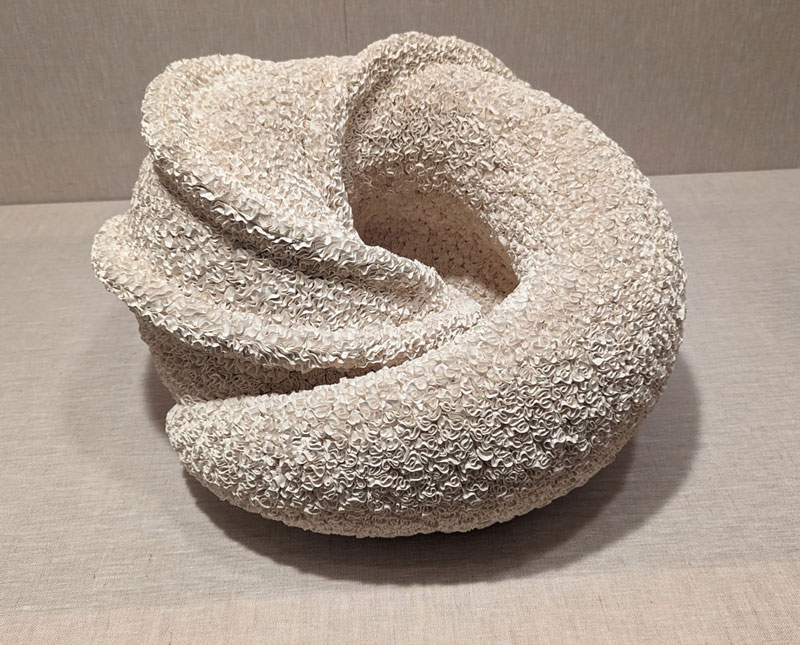
Art’s ability to jolt the imagination and defy assumptions makes it almost as captivating as nature in its splendor and variety. A new exhibit at the Art Institute highlights how true that statement is. Radical Clay: Contemporary Women Artists from Japan charts new territory in how much ceramics, as an artistic medium, has evolved. Remove all notions of tea ceremonies and fragile delicacy from your mind. Instead, think of sculpture used to express a huge array of concepts, ideas, interests and emotions. Groundbreaking examples of originality, the 40 pieces of ceramics included in this show are panoramic in scope. Some exist in communion with the natural world. Others indulge in fantastical form and finishes that confound all conceptions of what you envision ceramics can be. Another contingent uses clay to mimic other materials like cloth and paper to make socially conscious statements that encompass female sexuality and the proliferation of indiscriminate waste. Through often laborious technique and astonishing insight, the objects these artists create exist in their own realm of artistic achievement.

The history of Japanese ceramics may extend as far back as 10,000 BC, but the 37 women represented in Radical Clay don’t ground their work exclusively in that tradition. Their inspirations are much more contemporary. Partially influenced by a group of women compelled to form their own arts contingent in 1957; and encouraged by a rise in recognition of Japanese women ceramic artists in the 1980s, today’s artists own a more nuanced and progressive legacy. Often trained in distinguished art schools and exposed through travel to a wide spectrum of aesthetic concepts, they embrace a notion of artistic freedom that encourages personal expression. Along with its rampant beauty, the energy that expression generates is one of the exhibit’s most potent draws.
Anchored by Tokuda Yasokichi IV’s Rising Dragon, the exhibit tips it’s hat to tradition by honoring the exquisite work of an artist who took over the kiln of her renowned father. Imposing in its size, simple beauty and stunning glaze, Rising Dragon has an almost reverential, contemplative quality. It also acts as a conceptual touchtone for the rest of a show that explodes in quiet wonder.

Very much like visiting different planets in an expansive and spectacularly diverse universe, every display is like its own world; completely separate and distinct from anything else around it. Just steps away from Rising Dragon’s elegant symmetry is Liberation, an extraordinary feat of artistic release. A work by Konno Tomoko, you’re not sure if it’s plant, animal or extraterrestrial. It’s gentle tropical colors, riot of texture and flow make it as beautiful as it is confounding. Tokuda spent three years in Bali and developed an appreciation for the island’s colors and connected to its artistic sensibilities. Confiding the work’s name derives from the feeling of freedom she felt creating it, those attributes shine in her exceptional creation.

One of the artists in the exhibit, Hattori Makiko, shared a desire that could apply to all of the other works in Radical Clay; as well as her own. “I would be happy if the audience can immediately be drawn into the work before any other explanation because of the visual and tactile impact of the surface.” That’s very easy to do with Wandering, her coolly serene contribution to the exhibition. Thousands of rolled clay shaving are used to compose a feeling of softly coiled and sublime calm. Her wish also helps to prepare the eye for more art that’s as much a reflection of a single person’s mind as it is of her staggering talent. Oishi Sayaka uses decoration to express her feelings and believes the way she applies it to her work conveys those feelings better than words. In pieces like Hiding Apple: Skull, where fantasy and reality seem to merge, a disparate jumble of objects come together to show how equal they are to one another. Plants, insects, and parts of the human body are all beautifully rendered and sit in strange and wonderful harmony with one another.

Thanks to trailblazing collectors, artist self-advocacy and a growing presence online, interest in sculptures by Japanese women ceramists is growing in the United States. Museums are taking note with more and more of them presenting these gloriously revolutionary works in exhibition. Radical Clay represents the Art Institute’s first showing of this uniquely specialized and endlessly fascinating artistic spectrum.
Radical Clay: Contemporary Women Artist from Japan
Through June
The Art Institute of Chicago
Galleries 108 and 109
111 S. Michigan Avenue
Chicago, IL 60603